This article was co-authored by Zora Degrandpre, ND. Dr. Zora Degrandpre is a Natural Health Doctor and Licensed Naturopathic Physician in Vancouver, Washington. She is a grant reviewer for the National Institutes of Health and the National Center for Complementary and Alternative Medicine. She received her ND from the National College of Natural Medicine in 2007.
wikiHow marks an article as reader-approved once it receives enough positive feedback. In this case, several readers have written to tell us that this article was helpful to them, earning it our reader-approved status.
This article has been viewed 238,477 times.
Irrigating nasal passages and sinuses rinses out mucus and various irritants such as pollen, dust and bacteria. Sinus rinses give users relief from various nasal symptoms, such as a runny nose or a post-nasal drip. It is suitable for those suffering from allergies and other sinus problems. The NeilMed sinus rinse is a popular type of sinus rinse. You should always read the enclosed brochure in the box for instructions and other important information.[1]
Things You Should Know
- Fill the bottle up to the dotted fill line with slightly warm water. Always use distilled or previously boiled water. Tap water isn't safe to use in a sinus rinse.
- Add the contents of the mixture packet to the bottle, then shake the bottle to mix everything.
- Bending forward over a sink, bring the bottle nozzle up to one of your nostrils and squeeze the bottle gently. Once half the water is gone, repeat with your other nostril.
Steps
Preparing the Rinse
-
1Obtain a Neilmed Sinus Rinse kit. You can get the kit from your local pharmacy or NeilMed's website. NeilMed offers three types of kits:
- The Sinus Rinse Starter Kit includes an 8-ounce (240ml) squeeze bottle and 5 packets of premixed rinse solution.
- The Sinus Rinse Complete Kit includes an 8-ounce (240 ml) squeeze bottle and 50 packets of premixed rinse solution.
- The Sinus Rinse Kids Starter Kit includes a 4-ounce (120ml) squeeze bottle and 30 packets of premixed rinse solution, specially formulated for children.
-
2Wash your hands to avoid contaminating the product. The CDC recommends that you use warm water and soap. Scrub your hands for about 20 seconds, or about the amount of time it takes to sing the "Happy Birthday" song twice.[2]Advertisement
-
3Warm up distilled or previously boiled water until it is slightly warm.[3] You can warm water up on the stove or in the microwave in a clean safe container. You should warm the water for 5 seconds at a time if using a microwave. It should be at body-temperature, or "lukewarm."
- Do not use water that is not micro-filtered, boiled, or distilled to rinse your sinuses. Tap water may contain microorganisms that could cause illness.[4]
-
4Fill the bottle with the designated amount of water. The correct amount of water should be 8 oz. (240 ml). Your water line should be at the dotted fill line of the bottle. If you are using a Kids Sinus Rinse kit, you will use 4 oz. (120 ml) of water.[5]
-
5Cut the corner of a mixture packet that came with the kit. Don't use your teeth to tear the packet.[6]
-
6Pour the contents into the bottle and tighten the cap. Make sure you screw the cap on tightly so it doesn't fall off in the next step.[7]
-
7Place one finger over the tip and shake the bottle gently. This will allow the saline mixture to dissolve into the water.[8]
Administering the Rinse
-
1Bend forward over a sink to your comfort level. Tilt your head down and breathe through your mouth, not your nose.[9]
-
2Put the nozzle tip snugly against one of your nostrils. Keep your mouth open, because the mixture can drain from your mouth as well as the opposite nostril. This also reduces pressure on the ears.[10]
-
3Squeeze the bottle gently to force the liquid into your nasal passages. Squeeze until the solution begins to drain from the opposite nostril.[11]
-
4Squeeze the bottle until 1/4-to-1/2 (60-to-120 ml) is used in one nostril. You can use up to half the solution per nostril, but you should always use at least one-quarter of the solution for each.[12]
-
5Blow your nose without pinching it completely shut. Pinching your nose entirely shut would put too much pressure on your eardrums. Then, try sniffing in the remaining solution to help clear out the nasopharyngeal area (at the back of your nasal passages).[13]
- Tilt your head to the opposite side to expel any remaining solution from your sinuses or nasal passage.
- Spit out any solution that reaches the back of your throat.
-
6Repeat the last five steps for the other nostril. Use the rest of the solution.
-
7Discard the tiny amount of solution left over. Never store leftover solution. It can breed bacteria.[14]
-
8Disinfect the sinus rinse bottle. Rinse the cap, tube, and rinse bottle with water. Then, add a drop of dishwashing detergent to the bottle and fill it with water. Put the cap on and shake the bottle well. Squeeze the soapy water through the cap. Use a bottle brush to scrub the bottle, cap, and tube. Rinse thoroughly with clean water. Air dry the bottle and nozzle on a clean towel or glass plate.[15]
Expert Q&A
Did you know you can get expert answers for this article?
Unlock expert answers by supporting wikiHow
-
QuestionWhat can you do if your nasal passage is too blocked to allow the solution to go through?
 Zora Degrandpre, NDDr. Zora Degrandpre is a Natural Health Doctor and Licensed Naturopathic Physician in Vancouver, Washington. She is a grant reviewer for the National Institutes of Health and the National Center for Complementary and Alternative Medicine. She received her ND from the National College of Natural Medicine in 2007.
Zora Degrandpre, NDDr. Zora Degrandpre is a Natural Health Doctor and Licensed Naturopathic Physician in Vancouver, Washington. She is a grant reviewer for the National Institutes of Health and the National Center for Complementary and Alternative Medicine. She received her ND from the National College of Natural Medicine in 2007.
Natural Health Doctor
-
QuestionHow many times can I use this on a toddler?
 Zora Degrandpre, NDDr. Zora Degrandpre is a Natural Health Doctor and Licensed Naturopathic Physician in Vancouver, Washington. She is a grant reviewer for the National Institutes of Health and the National Center for Complementary and Alternative Medicine. She received her ND from the National College of Natural Medicine in 2007.
Zora Degrandpre, NDDr. Zora Degrandpre is a Natural Health Doctor and Licensed Naturopathic Physician in Vancouver, Washington. She is a grant reviewer for the National Institutes of Health and the National Center for Complementary and Alternative Medicine. She received her ND from the National College of Natural Medicine in 2007.
Natural Health Doctor
-
QuestionHow much solution should be used after sinus surgery?
 Zora Degrandpre, NDDr. Zora Degrandpre is a Natural Health Doctor and Licensed Naturopathic Physician in Vancouver, Washington. She is a grant reviewer for the National Institutes of Health and the National Center for Complementary and Alternative Medicine. She received her ND from the National College of Natural Medicine in 2007.
Zora Degrandpre, NDDr. Zora Degrandpre is a Natural Health Doctor and Licensed Naturopathic Physician in Vancouver, Washington. She is a grant reviewer for the National Institutes of Health and the National Center for Complementary and Alternative Medicine. She received her ND from the National College of Natural Medicine in 2007.
Natural Health Doctor
Warnings
- In rare situations, especially if you have had sinus surgery, the saline solution can pool in the sinus cavities and nasal passages and then drip from your nostrils hours after rinsing. To avoid this harmless but annoying inconvenience, take one extra step after rinsing: lean forward, tilt your head sideways and gently blow your nose. Then, tilt your head to the other side and blow again. You may need to repeat this several times.⧼thumbs_response⧽
- Do not rinse if your nasal passages are completely blocked or if you have an ear infection or blocked ears. If you have had recent ear or sinus surgery, contact your physician prior to irrigation. If you experience any pressure in the ears or burning in the nasal passages, stop irrigation and get further directions from your physician.⧼thumbs_response⧽
- Read and retain enclosed brochure in the box for instructions and other important information.⧼thumbs_response⧽
- Always use distilled or micro-filtered (through 0.2 micron) or commercially bottled or previously boiled and cooled down water at lukewarm or body temperature.
- For your safety, do not use tap or faucet water for dissolving the mixture unless it has been previously boiled for five minutes or more as boiling sterilizes the water.
- Other choices are distilled, micro-filtered (through 0.2 micron), commercially bottled or, as mentioned earlier, previously boiled water at lukewarm or body temperature. You can store boiled water in a clean container for seven days or more if refrigerated.
- Do not use non-chlorinated or non-ultra (0.2 micron) filtered well water unless it is boiled and then cooled to lukewarm or body temperature
⧼thumbs_response⧽ - Always rinse your nasal passages with NeilMed® SINUS RINSE™ packets only.
- Homemade solutions may have incorrect concentrations, leading to inadequate relief or even nasal congestion. Additionally, store-bought table salt and baking soda are not pharmaceutical grade compounds for medical use and may contain impurities.
⧼thumbs_response⧽
References
- ↑ https://www.webmd.com/allergies/features/neti-pot-nasal-irrigation-pros-and-cons#1
- ↑ http://www.cdc.gov/handwashing/when-how-handwashing.html
- ↑ http://www.neilmed.com/usa/np_water_quality.php#sthash.7V7ul7Fd.dpbs
- ↑ http://www.fda.gov/ForConsumers/ConsumerUpdates/ucm316375.htm
- ↑ http://www.neilmed.com/usa/directions-for-use.php
- ↑ http://www.neilmed.com/usa/directions-for-use.php
- ↑ http://www.neilmed.com/usa/directions-for-use.php
- ↑ http://www.neilmed.com/usa/directions-for-use.php
- ↑ http://www.neilmed.com/usa/directions-for-use.php
- ↑ http://www.neilmed.com/usa/directions-for-use.php
- ↑ http://www.neilmed.com/usa/directions-for-use.php
- ↑ http://www.neilmed.com/usa/directions-for-use.php
- ↑ http://www.neilmed.com/usa/directions-for-use.php
- ↑ http://www.neilmed.com/usa/directions-for-use.php
- ↑ http://www.neilmed.com/usa/use_npsr.php
About This Article
A NeilMed sinus rinse can help you flush out mucus and irritants from your sinuses, and the kit should have everything you need to get started. First, wash your hands so you don’t spread bacteria. Then, boil some water and let it cool until its lukewarm. Pour this water into the rinse bottle up to the dotted line. Add the mixture packet, hold the opening closed with one finger, and shake up the bottle until the saline is all dissolved. To administer the rinse, first, put 1 nozzle tip snugly against one of your nostrils. Then, gently squeeze the bottle to force liquid into your nasal passages and out the opposite nostril. After you’ve used half the bottle, switch to the other nostril. To learn how to prepare the rinse bottle for use again, read more from our Naturopathy co-author!


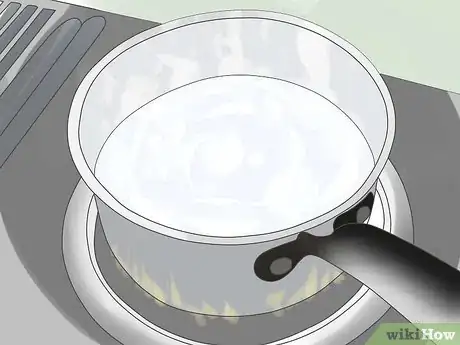
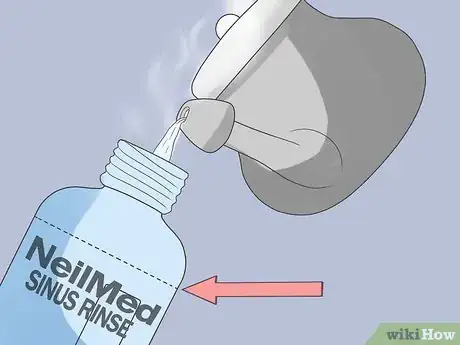
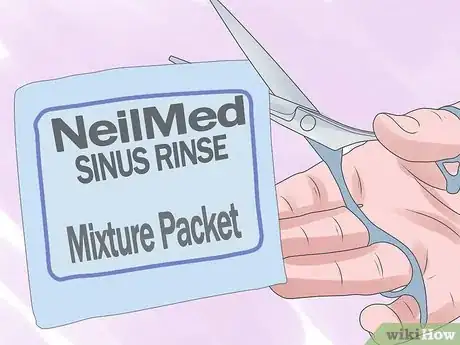

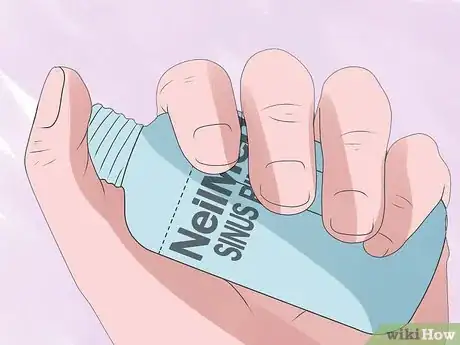
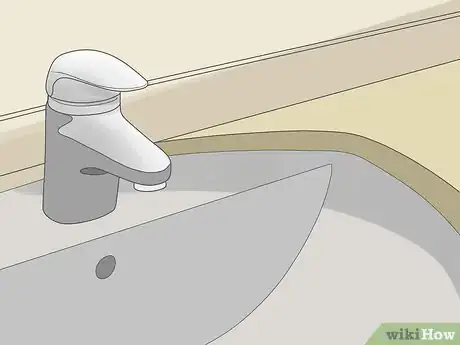
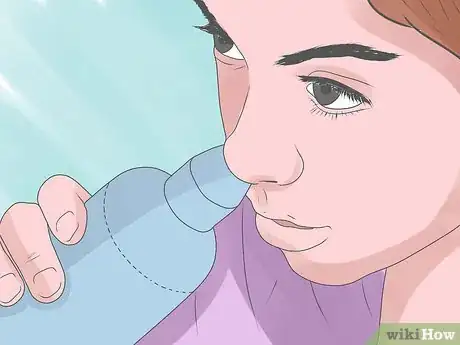
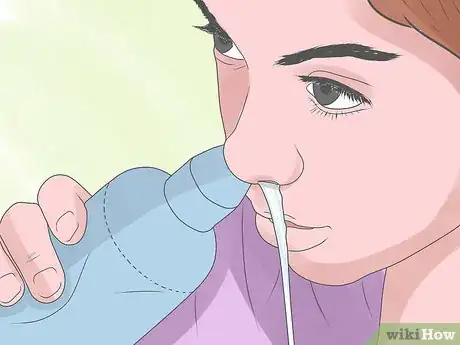

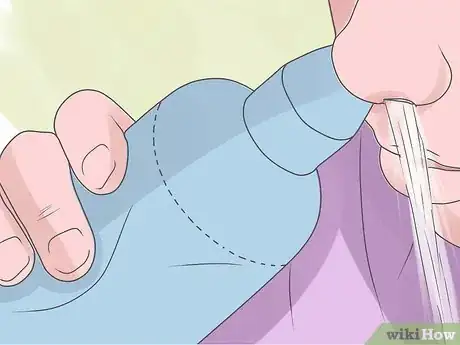
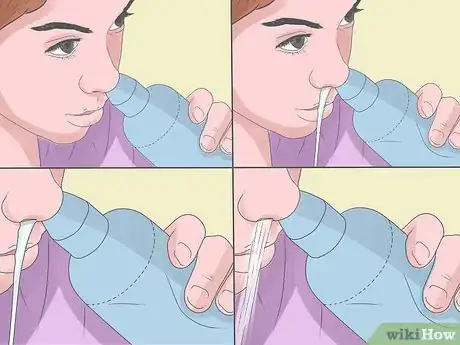
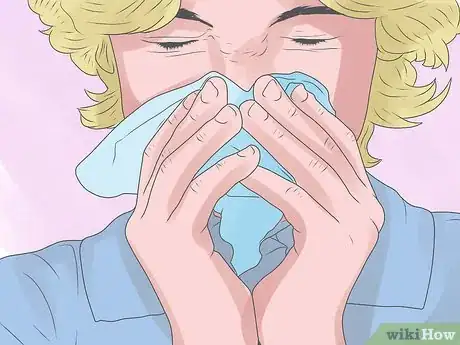
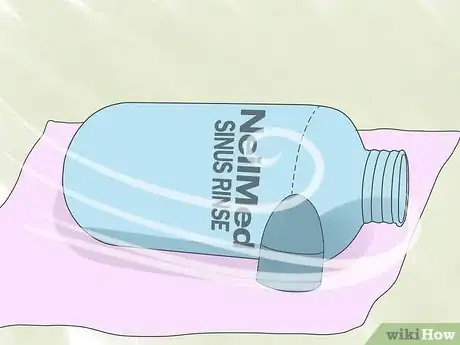
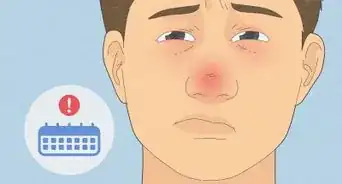



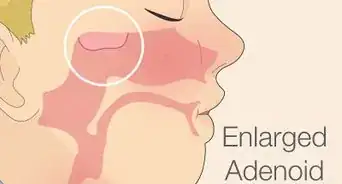




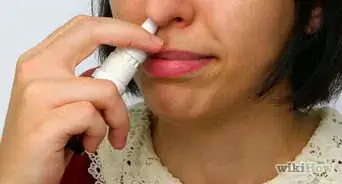












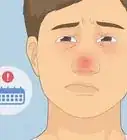


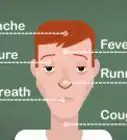



































Medical Disclaimer
The content of this article is not intended to be a substitute for professional medical advice, examination, diagnosis, or treatment. You should always contact your doctor or other qualified healthcare professional before starting, changing, or stopping any kind of health treatment.
Read More...